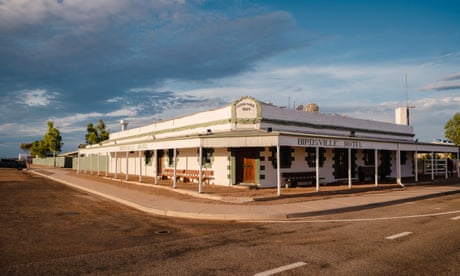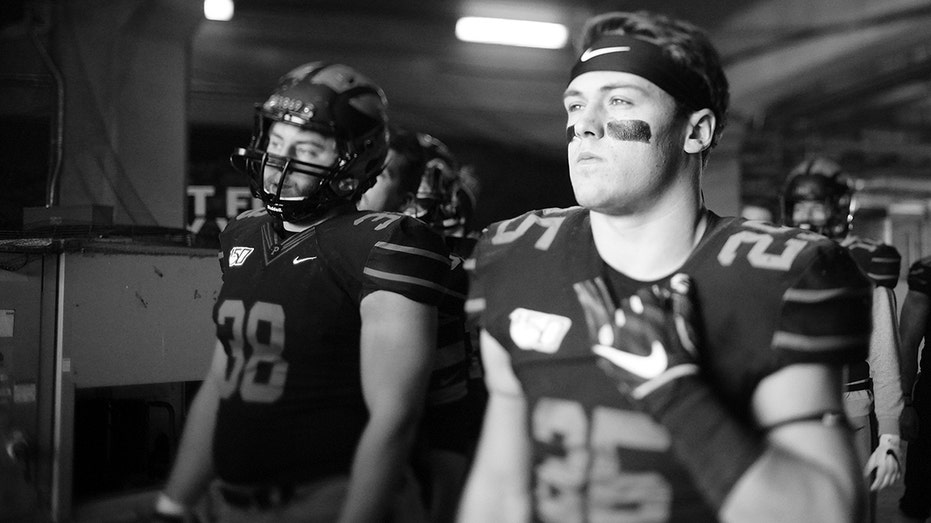- by foxnews
- 02 Feb 2025
‘Birdsville mindset’: what an outback town where the roads melt can teach us about living with heat
‘Birdsville mindset’: what an outback town where the roads melt can teach us about living with heat
- by theguardian
- 18 Feb 2023
- in news

The mercury is already nudging 40C on a February morning in Birdsville and, walking down the main drag, you could be forgiven for mistaking yourself in the nearby ghost town of Betoota.
A guard dog barks half-heartedly without emerging from the shade beneath a set of stairs while a raptor wheels above. There is not a person in sight.
The last census recorded Birdsville's population as 110, but that figure drops by more than half over summer. Those who stick it out use terms like "hibernate" and "bunkering down" to describe how they survive the three months from December to March.
Yet while others have fled the heat, an Australian human rights lawyer has travelled the opposite direction, as she seeks adaptation strategies she hopes will save lives as the climate crisis unfolds.
Susan Harris Rimmer is leading the Climate Justice Observatory, which is developing strategies to help ensure that people on the margins of society don't cop the brunt of climate breakdown.
Her work seems particularly relevant this week as much of Australia endures a heatwave, with the Bureau of Meteorology issuing warnings in New South Wales, Victoria, Queensland, Western Australia, South Australia and Tasmania.
Extreme heat kills more people than other natural disasters associated with global warming, Harris Rimmer says, yet it is the one for which she fears we are most unprepared - even among those in the "sunshine state".
"Queenslanders know how to deal with a flood. Queenslanders know how to deal with a cyclone. Most Queenslanders know how to deal with bushfires," she says. "But extreme heat is the one where our minds are in the wrong spot."
Climate Justice Observatory's "Cruel Summer" campaign, launched this week, is championing a string of policy reforms, including a calibrated warning system for heat, like there is for bushfires and cyclones. It calls for the creation and expansion of public "cool havens", which would act like a cyclone shelter or a fire bunker in the case of heatwaves, whether that be extending library hours or community centres so that those experiencing energy poverty aren't left to swelter in their own homes. Pregnant women should be better educated on the dangers to their unborn children and homeless people sheltered from deadly extremes, it says. And there should be chief heat officers to coordinate the states' responses, just as their health equivalents did during the pandemic.
All this will require a cultural shift that recognises the dangers of extreme heat - which is what has brought Harris Rimmer to Birdsville to learn from people for whom managing heat is so commonplace it barely rates a mention.
For thousands of years, people here on the edge of the Simpson Desert either learned to take its extreme climate in their stride, fled or perished.
Heat pervades so much of daily life during summer it barely rates a mention until the bitumen of the road starts to twinkle, indicating that it is literally melting - a point at which it will stick to shoes, melt thongs, start to boil tap water and allow locals to concede that, yes, it is a little warm.
As well as learning from locals, Harris Rimmer has come to town with an interactive map developed by her team which allows Queenslanders to see how much hotter climate scientists believe their homes will become over coming years and decades.
Birdsville, for example, will have 6.4 more heatwave days in 2050 and 12 more days by 2070 if emissions aren't further curbed. Not that that seems to hold any great menace for locals.
"It's like telling people in the Yukon they're going to have more days of minus 35 in the winter," says Jenna Brook, who runs Birdsville's two petrol stations, which also serve as its mechanic workshop, general store, post office and gift store.
Joseph Szczepina might almost be described as a climate martyr, defying the local heat in his attempt to convert a square kilometre of Martian red and barren gibber rocks on the outskirts of town into an organic olive grove he calls his "promised land".
Szczepina believes every human has the moral obligation to improve the earth upon which they live. He's already survived a summer that edged 50C and barely dropped below 40C in a house he built without air-conditioning and no greater cooling technology than a wet towel and a bathtub.
"I've had heatstroke two or three times," the 75-year-old says. "Now I have adapted to the conditions. I can handle anything."
Like most people who work outdoors here, Szczepina gets up early in summer. For him, that's a 4am start. He aims to finish his outdoor work tasks by 9am before heading inside to tinker and plan.
Others tinker on larger tracts of land. Peter Nunn and Fiona Loudon-Shand manage Australia's second largest cattle station, Clifton Hills, a sprawling 4.5 million acres estate, home to 18,000 head of cattle.
"I'm not too worried about the heat, we can handle it, the men can handle it," Nunn says. "It's the cattle - that's your main priority."
The key to keeping his livestock safe over summer, the station manager says, is to try not to move them at all. All the mustering and cattle work is done in cooler months, meaning ringers and farmhands move on from December to March. And if cattle have to be rounded up in the hottest part of the year, Nunn might set out at 2.30am, or even earlier on a moonlit morning. The whole year, effectively, is planned around managing summer heat.
Wangkangurru Yarluyandi elder and park ranger Don Rowlands says this kind of work schedule has always been the way in these lands of his ancestors.
"Traditional people worked it out, they did all their walking at night," Rowlands says.
Rowlands is one of the many older locals who recall the days before air-conditioners revolutionised life in Birdsville. But the knowledge his people tapped into in their absence stretches back into deep history.
He recalls long, hot summer days camped out by a creek, with the children swimming and fishing and the infants kept cool beneath a poonga-poonga, a temporary structure made of dampened leaves.
"Little things like that take so many degrees out of the heat," he says.
It is for this wisdom of lived experience that Harris Rimmer has taken the 6.5 hour mail flight from Brisbane - via Toowoomba, Charleville, Quilpie and Windorah.
Though the details of heat management strategies would look different applied more broadly, it is the underlying principles that Harris Rimmer is interested in.
The seasonal mobility of ringers, tourist workers and council crews here could provide a model in other industries and communities who will increasingly need to avoid extreme weather. Long summer holidays might need to become the norm, the nine to five workday altered during the hottest, wettest or most cyclone-hit months. Schools might have to close on dangerously hot days as people bunker down. And, as they are in Birdsville, the isolated, vulnerable and elderly will need the support of community and the watchful eye of neighbours.
- by foxnews
- descember 09, 2016
Disney reveals fate of closed Star Wars hotel
The building that was formerly home to the Star Wars: Galactic Starcruiser at Walt Disney World in Orlando, Florida will be repurposed, the company confirmed to local media earlier this week.
read more


